This article was medically reviewed by Luba Lee, FNP-BC, MS. Luba Lee, FNP-BC is a Board-Certified Family Nurse Practitioner (FNP) and educator in Tennessee with over a decade of clinical experience. Luba has certifications in Pediatric Advanced Life Support (PALS), Emergency Medicine, Advanced Cardiac Life Support (ACLS), Team Building, and Critical Care Nursing. She received her Master of Science in Nursing (MSN) from the University of Tennessee in 2006.
There are 23 references cited in this article, which can be found at the bottom of the page.
This article has been viewed 103,864 times.
A bruised toenail can make it hard to walk and leave you with a throbbing pain for a few days. If you run a lot or take part in sports with heavy footwork like soccer or dancing, you have a higher risk of bruising your toenail. It can also happen if you accidentally kick or trip over something hard or drop a heavy object on your toe. It’ll heal with time, but there are some things you can do to speed up the recovery process and make it more comfortable. If your toe is bruised, stiff, and hurts excessively, that could be a sign that it’s broken.[1] In that case, see a doctor as soon as you can.
Steps
Soothing Pain and Swelling
-
1Ice your toe for 10-20 minutes at a time. Apply a cold ice pack to your toe at least 3 times a day to help ease the swelling. Put a towel over the ice pack so the cold surface isn't touching your skin.[2]
- Cold therapy is best for reducing swelling right after an injury because it decreases blood flow to the area.
- Try submerging your toe in an ice bath if you want better coverage of the affected area.
-
2Elevate your foot above the level of your heart whenever you’re lying down. Use pillows or a tall footrest to prop up your foot while you're sitting or lying down. Make sure your toe is above the level of your heart to help the swelling go down faster.[3]
- Elevation decreases blood flow to the area, which helps manage pain and swelling.
- Try to keep it elevated for at least 2 to 3 hours per day to speed up the healing process.
Advertisement -
3Rest as much as you can to relieve pain and prevent further injuring your toe. Take time off from your workout and only move around when you need to. When you do need to walk around to run errands, wear supportive shoes that aren’t constrictive around your toe or the top of your foot.[4]
- Slip-on sandals with arch support are a good choice. Just be careful putting them on and taking them off.
- If you’ve injured your big toe, avoid wearing sandals that have a toe-hold.
-
4Apply heat for 15 minutes at a time after 48-72 hours. Use a heating pad or heated compress on your toe only after the swelling has gone down, which can take anywhere from 2 to 3 days after your injury. Leave it on for only 15 minutes at a time and do this up to 3 times a day.[5]
- Don't apply heat before the swelling has gone done—just stick to ice. Heat increases blood flow to the area and can make any swelling worse.
-
5Take an over-the-counter painkiller to ease some of the pain. Take 1 to 2 capsules (200 to 400 mg) of acetaminophen or ibuprofen with 8 fluid ounces (240 mL) of water every 4 to 6 hours to help ease the pain. If your toe or the area around your toenail is swollen, ibuprofen is best since it contains anti-inflammatories.[6]
- If you're pregnant, avoid taking ibuprofen because it can cause pregnancy complications.
- Don’t take ibuprofen in high doses or daily for longer than 1 week because it can increase your risk of a heart attack or stroke. The maximum daily dose is 800–1,200 mg per day for minor aches and pains.
- Each pill of acetaminophen contains around 325 mg—don't take more than 4,000 mg within 24 hours.
-
6Leave it alone as much as possible and avoid constrictive footwear. Don't pick at it or touch it and try to avoid wearing socks or shoes that are extremely tight because it can irritate and put pressure on the wound. Your body is built to deal with bruises accordingly, so it's best to take a hands-off approach and let it do its thing.[7]
- If you run a lot or play sports like soccer that require a lot of foot action, take at least 5-7 days off so your toenail can heal.
Tip: If you can't avoid wearing close-toed shoes for a while, consider wearing a toe cap over the toe to protect it. Just be sure it's not too tight and doesn't rub against your skin or your nail bed when you're walking.[8]
-
7Wash and bandage your toe if it's bleeding. If there's blood coming out from under your nail, hold your toe under the faucet and rinse it with cool water. Pat the area around your toe dry with a clean towel and let your toe air dry. Wrap a clean adhesive bandage around your toe once it's dry.[9]
- Stretchy gauze might be more comfortable and stay on better than a regular adhesive bandage. To put it on, cover your toe with a small gauze pad and then wrap the gauze around your toe so it's slightly tight but not so tight that you feel lots of pressure.
- Take off the bandage and let the wound “breathe” once you notice the bleeding has stopped.
- Apply antibacterial ointment or petroleum jelly on your toe before you bandage it to help speed up the healing process.
Speeding up Your Recovery Naturally
-
1Drink at least 96 fl oz (2,800 mL) of water per day to stay hydrated. Water helps speed up wound recovery, so drink up! If you're a woman, aim to drink at least 96 fluid ounces (2,800 mL) per day. If you're a man, try to get at least 104 fluid ounces (3,100 mL) per day.[10]
- Another way to calculate your ideal intake is to divide your weight (in pounds) by 2. The result is how many ounces you should drink a day. For example, if you weigh 140 pounds (64 kg), you should drink around 70 fluid ounces (2,100 mL) per day.
- Avoid alcohol and highly-caffeinated drinks like coffee and black tea while your toe is healing because these will only dehydrate your body and extend your recovery time.
-
2Eat fruits and veggies rich in vitamin C to promote healing. Snack on healthy foods like citrus fruits, pineapple, bell pepper, leafy greens, and prunes to help your bruised toe heal up faster. Aim to get around 65 to 90 mg of vitamin C every day.[11]
- Sweet potatoes, tomatoes, winter squash, broccoli, brussel sprouts, and cauliflower are also great sources of this vital nutrient.
- If your doctor says it's okay, you can also take vitamin C supplements to help boost your intake.
- The maximum daily amount of vitamin C is 2,000 mg. Any more than that won’t hurt you, but it may cause an upset stomach if you take the maximum daily dosage all at once.
-
3Use aloe vera gel to help the bruise go away faster. Gently rub a pea-sized amount of aloe vera gel onto your bruised toe 3 to 4 times a day. Check the ingredients on the back of the package to make sure the gel is 100% aloe vera. Additives dilute the actual content of aloe vera, which means the gel won’t be as effective.[12]
- Aloe vera can help soothe the inflamed skin on and around your toe. It'll also help repair the broken blood vessels just under your skin.
-
4Apply arnica gel to the bruise 3 times a day. Squeeze a pea-sized amount of gel onto your clean finger or a cotton swab and gently massage it onto your bruised toe. Do this 3 times a day to help speed up the healing process.[13]
- You can also take arnica orally by dissolving 2 pills under your tongue every 6 hours or by drinking 2 to 3 cups of arnica tea every day.
- Note that arnica is a homeopathic remedy and not all medical studies have found it to be effective at healing bruises faster.
Seeking Medical Care
-
1Assess your pain level to determine if your toe is broken. If you can't straighten or move your toe, if it feels numb, or if it's noticeably bent, you may have a broken toe. Furthermore, if it swells up a lot and stays swollen or if the pain gets worse, you should see a doctor (ideally, a podiatrist) as soon as you can.[14]
- Dropping a heavy object on your toe or stubbing it against something hard are 2 of the most common ways people can break their toe.
- It usually takes about 4-6 weeks for a broken toe to heal up completely.
- If it's not your big toe that's potentially broken, your doctor may recommend you treat it at home first.
-
2Ask your doctor to drain the blood below the nail to relieve pressure. Ask your doctor about draining the blood under the nail if it’s so painful that you’re having trouble resting. Nail trephination is when the doctor uses a small sterile needle to poke a hole in your nail to drain out some of the blood. This will help relieve pressure on your nail and, hopefully, ease most of the pain.[15]
- You can do this at home, but it’s best to have it done by a doctor (especially if you’re squeamish about blood or needles).
-
3Ask your doctor to remove the nail if it’s cracked or loose. If your nail is cracked or about to fall off, allow your doctor to remove the nail so it can heal and regrow without any complications. After it’s removed, apply antibiotic ointment to the area twice a day and wrap it in a sterile bandage. Change the bandage if you see fluid or blood soaking through.[16]
- Keep your toe wrapped for 1 week after the toenail removal and check in with your doctor if you notice excessive bleeding, swelling, or pain.
- Take it easy for 2 weeks after the procedure—that means no running, jumping, or sports for a while.
- It’ll take 6 to 18 months for a new toenail to grow in.
-
4Go to the emergency room or urgent care if you notice signs of an infection. Look out for red streaks or pus draining from your toenail. On top of that, if you feel feverish or if the nail feels hot to the touch, call for emergency care.[17]
- If there's lots of pus seeping from the nail and the area around it is inflamed, you may need to have surgery. A wedge resection is the most common type of surgery to treat this (as well as ingrown toenails).[18]
Preventing Bruised Toenails
-
1Trim your toenails regularly so there's only a small strip of white at the tip. Clip your toenails every 1 or 2 weeks so that the nail doesn't grow beyond the edge of your toe. Don't clip the corners too short because it could cause the nail to grow into the skin around your nailbed.[19]
- You can also file them down, but it may take more time.
- For your littlest toenails, use a smaller pair of clippers if you have some.
-
2Wear shoes that aren't too tight or loose in the toe box. A toe box that's too tight can cause your toes to smash up against the top, front, and sides of the shoe, so make sure there’s at least 1⁄2 in (1.3 cm) of space from your big toe to the front of the toe box. Don't allow more than 1 inch (2.5 cm) of room because your foot sliding back and forth in the shoe can cause your toenails to bash up against the front.[20]
- You should have enough room in the toe box to comfortably wiggle your toes.
- If you have a history of bruised toenails from running, buy shoes that are 1/2 to 1 full size bigger than your regular size. Just be sure to wear cushy socks and check the distance from your big toe to the end of the toe box.
- Try on new shoes to buy at the end of the day when your feet are the most swollen.
Tip: Try different lacing techniques to help prevent bruised toenails. For instance, making a large "X" with the laces through the bottom and top eyelets before lacing the shoes in a criss-cross fashion can help lift the toe box so your big toe has more room.[21]
-
3Use the right size socks made from synthetic fibers. Choose socks that aren't too loose or too tight around your toes so they're not putting extra pressure on them while you're walking or running. Opt for synthetic fibers like acrylic and polyester over cotton to keep moisture to a minimum.[22]
- It's important to have moisture-wicking socks because any moisture can cause the sock to slip on your foot or the inner sole of the shoe, putting pressure on your toes and causing unnecessary friction.
- When you put on your socks, the front seam should lay flat across the top of your toes. If the sock tends to slip in your shoes and the seam ends up under your nails or at the tips of your toes, that's a sign you need better fitting socks.
- The heel part of the sock should be stretched around your heel without any bunching or sagging material.
- If you often wear hiking boots, choose medium to thick socks made from a blend of materials like merino wool, nylon, lycra, and elastane.
-
4Strike with your midfoot when you're walking or running downhill. Keep your body in an upright position and strike the ground with your midfoot—not your heel or forefoot. Make sure your knees are soft and never locked during any part of the stride.[23]
- Putting your forefoot down first may seem intuitive, but it'll shift your foot inside your shoe, causing your toes to hit the front of the toe box.
Warnings
- Don't try to break the blood vessels under your nail or rip off the toenail—see a professional so there's little to no chance of infection.[24]⧼thumbs_response⧽
References
- ↑ https://www.foothealthfacts.org/conditions/toe-and-metatarsal-fractures-(broken-toes)
- ↑ https://www.ncbi.nlm.nih.gov/pmc/articles/PMC5339266/
- ↑ https://www.uofmhealth.org/health-library/tw4354spec
- ↑ https://www.uofmhealth.org/health-library/tw4354spec
- ↑ https://www.researchgate.net/publication/269767537_Mechanisms_and_efficacy_of_heat_and_cold_therapies_for_musculoskeletal_injury
- ↑ https://www.ncbi.nlm.nih.gov/pmc/articles/PMC5800651/
- ↑ https://www.ncbi.nlm.nih.gov/pmc/articles/PMC5420601/
- ↑ https://medicalxpress.com/news/2016-10-runner-toe.html
- ↑ https://medlineplus.gov/ency/patientinstructions/000800.htm
- ↑ https://www.ncbi.nlm.nih.gov/pubmed/26947692
- ↑ https://www.sciencedirect.com/science/article/pii/S2405857215300346
- ↑ https://www.ncbi.nlm.nih.gov/books/NBK92761/
- ↑ https://onlinelibrary.wiley.com/doi/10.1111/jphp.12724
- ↑ https://www.nhs.uk/conditions/broken-toe/
- ↑ https://www.ncbi.nlm.nih.gov/pmc/articles/PMC3193631/
- ↑ https://www.aafp.org/afp/2002/0615/p2557.html
- ↑ https://www.ncbi.nlm.nih.gov/pmc/articles/PMC1472971/
- ↑ https://www.ncbi.nlm.nih.gov/books/NBK513138/
- ↑ https://www.cdc.gov/healthywater/hygiene/hand/nail_hygiene.html
- ↑ https://www.podiatrytoday.com/keys-treating-nail-and-digital-trauma
- ↑ https://www.thereluctantenthusiast.com/two-lacing-techniques-to-beat-bruised-toenails/
- ↑ https://www.podiatrytoday.com/jogger%E2%80%99s-toe-sock-culprit
- ↑ https://www.ncbi.nlm.nih.gov/pmc/articles/PMC4523806/
- ↑ https://www.ncbi.nlm.nih.gov/pubmed/2018587
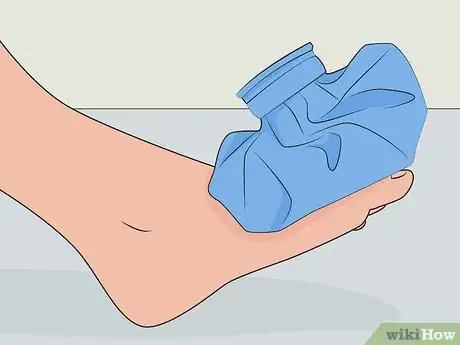


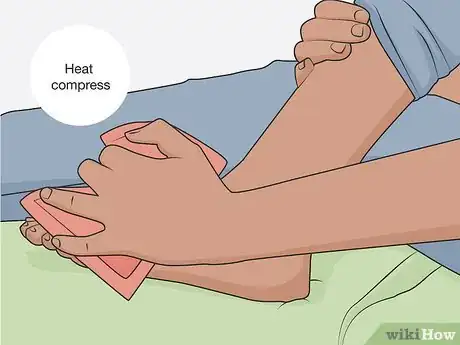
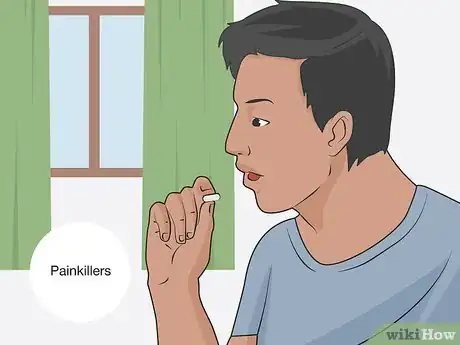
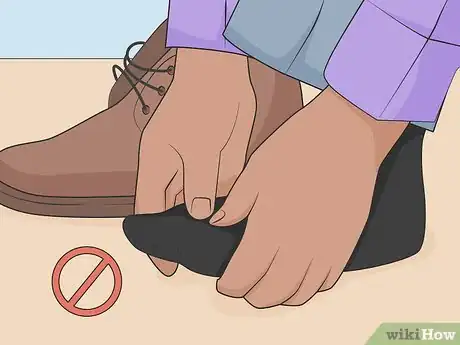
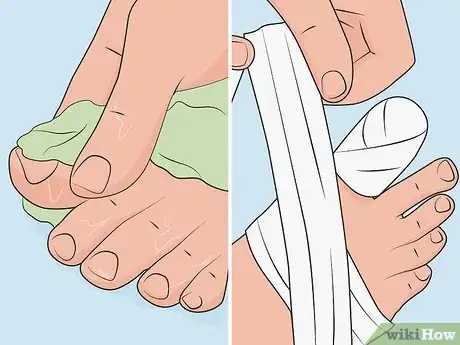
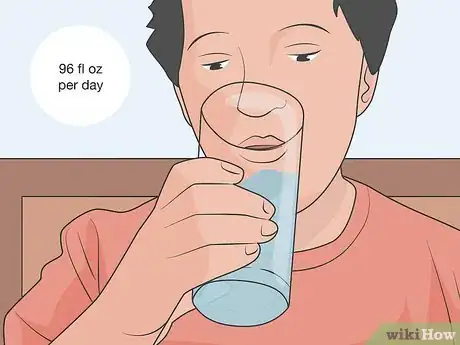

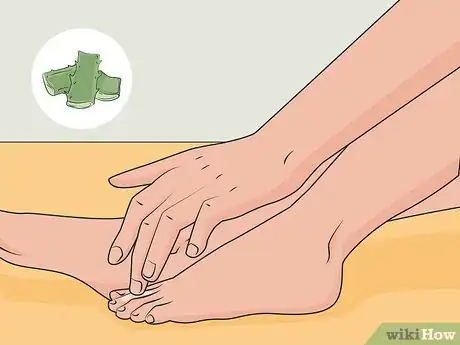
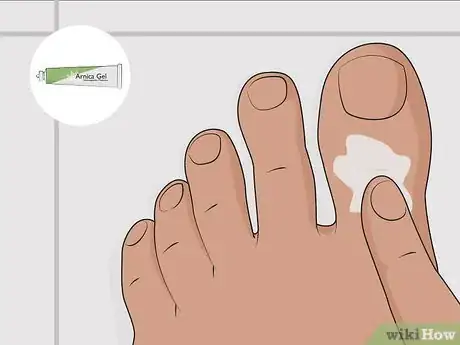
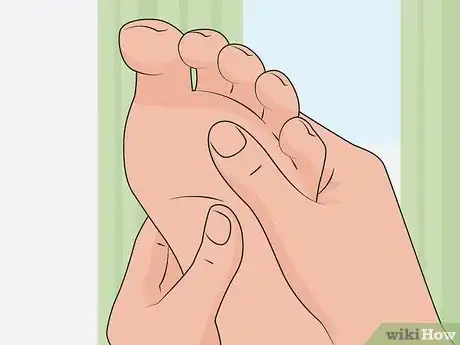
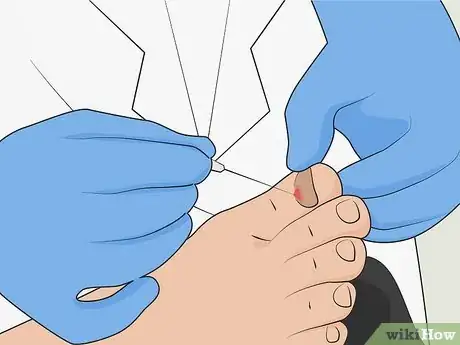
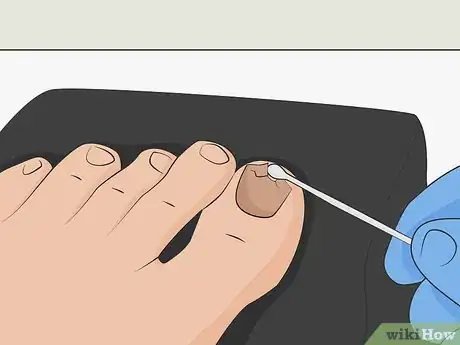
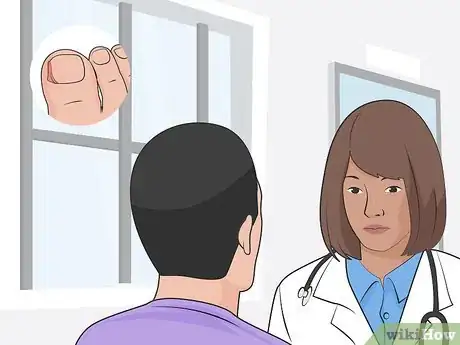
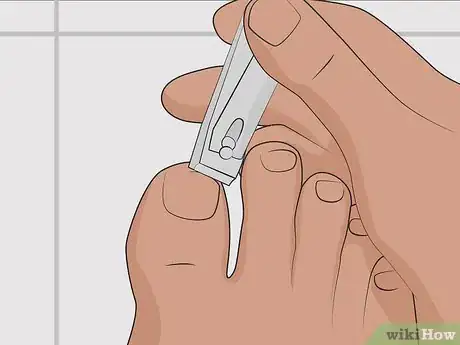
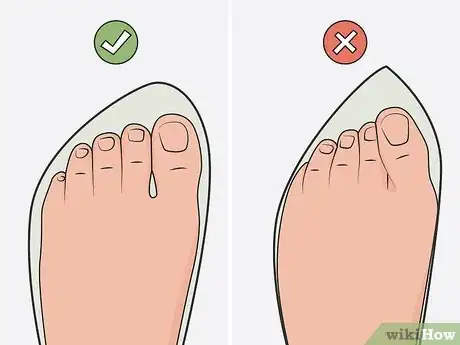
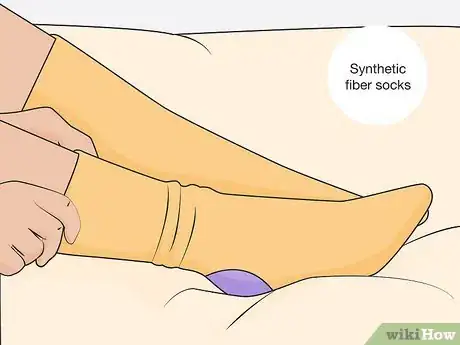


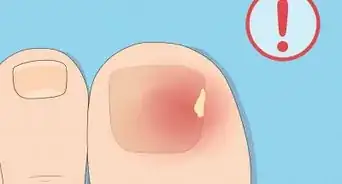



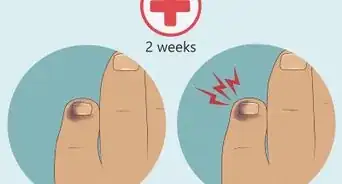
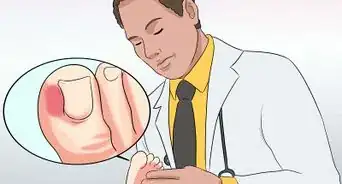
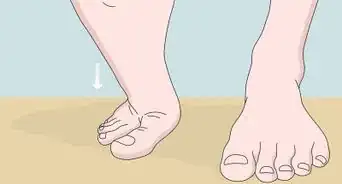
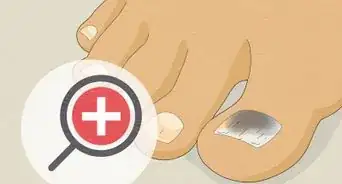











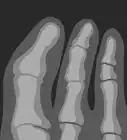






































Medical Disclaimer
The content of this article is not intended to be a substitute for professional medical advice, examination, diagnosis, or treatment. You should always contact your doctor or other qualified healthcare professional before starting, changing, or stopping any kind of health treatment.
Read More...